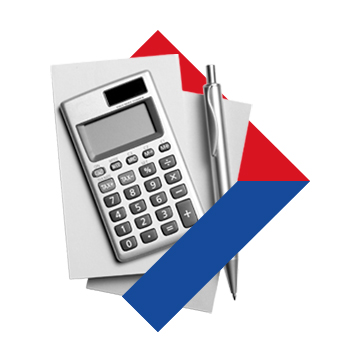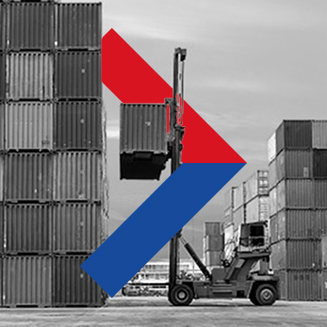Login to your bank’s website or call your bank’s phone service and select the BPAY® option to transfer money.
Suggested Search
Thinking about boosting your super with an extra contribution? That’s smart for two reasons. You may pay less tax now, and you’ll enjoy more super down the track.
How can I contribute to my super?
Topping up your super with an extra contribution – even if it’s only a small amount – can make a big difference over time. The beauty of making super contributions is the potential to pay less tax, while growing your super balance faster thanks to the power of compounding. Just keep in mind that there are limits to the amount you can contribute to super each year.
There are two ways you can add to your super: from your before-tax income or from your after-tax income.
Before tax
Includes super guarantee (SG), salary sacrifice, and personal contributions that you claim a tax deduction for. These are also known as concessional contributions. The combined amount of concessional contributions you can make in a financial year is $30,000.
After tax
Includes spouse contributions, and personal contributions that you don’t claim a tax deduction for. These are also known as non-concessional contributions. The combined amount of non-concessional contributions you can make in a financial year is $120,000.
How is it taxed?
When you or your employer make a contribution to your super from your before-tax income, it’s taxed at 15%. There are a few exceptions to this for people with very low or very high incomes.
How is it taxed?
If you or your spouse make a contribution to your super from after-tax income, you don’t pay any contributions tax on it. This is because you’ve already paid income tax on that money.
Types of contributions
Salary sacrifice
You can arrange for your employer to make additional super contributions on your behalf in return for giving up some of your before-tax income. These are known as ‘salary sacrifice’ contributions.
Salary sacrifice contributions are generally only taxed at 15%, while the tax rate you pay on your income can be as high as 47% (including the Medicare levy), depending on how much you earn. That makes super an extremely tax-effective investment! Even if you’re a high-income earner and have to pay extra tax on your contributions, the tax savings are still significant.
Learn more about salary sacrifice
Personal contribution
Personal contributions are when you use some of your after-tax income or savings to make an additional contribution to your super.
You can generally claim a full tax deduction for some or all of your contribution as long as you’re younger than 67. Once you are 67 or older other conditions may apply. This will reduce your taxable income and the amount of tax you pay. You’ll need to send a form called Notice of intent to claim a tax deduction to your super fund and wait for their acknowledgement before you can claim it as a deduction.
Make sure you take note of the timeframes and rules for providing the notice of intent form, otherwise your tax deduction might not be allowed. You’ll find all this information on the form.
Government co-contribution
If you’re an employee, have annual income of less than $62,488 (for the 2025-26 financial year), and you make a personal contribution to super that you don’t claim a tax deduction for, you may be eligible to receive a government co-contribution.
The government will pay up to $500 per year into your super, depending on your income and the amount of your contribution. You don’t need to complete any forms or notify your super fund – it will be automatically calculated and paid into your super after you lodge your tax return.
Spouse contribution
It’s possible to make a contribution to your spouse’s super from your after-tax income or receive a contribution to your super from them. Sometimes couples do this when one of them isn’t working, or if one person earns more than the other.
The person that makes the contribution may be able to claim a tax offset of up to $540 for the contribution, depending on their spouse’s income and the amount of the contribution. You can’t claim a tax deduction for a spouse contribution.
Downsizer contribution
If you’re 55 or over and you sell a home that you’ve owned for at least 10 years, you may be able to contribute up to $300,000 of the proceeds from the sale of your home into your super.
The contribution is completely tax-free when you deposit it into your super, and you can also withdraw it tax-free later on. What’s more, downsizer contributions don’t count towards the other contributions caps. So it’s a great way to top up your retirement savings.
To make a downsizer contribution, you need to fill out the ATO’s Downsizer contribution into super form and send it to your super fund before making the contribution and within 90 days of selling your home.
The eligibility rules and impacts on your Age Pension entitlements for downsizer contributions can be complicated, so it’s best to talk to a financial adviser first.
How much extra should I contribute to super?
You may choose to make regular additions to your super through a salary sacrifice arrangement or make a larger one-off contribution if you have some money to spare, such as savings or an inheritance.
The trade-off is that once you put money into your super account, you generally can’t take it out again until you retire. So make sure it’s money you can afford to part with.

Retirement Calculator
Find out how much money you’ll need for the lifestyle you want when you retire.
Sometimes it’s possible to make a larger contribution above the general limits (the concessional and non-concessional contributions caps).
Making a larger before-tax (concessional) contribution
If you haven’t used your concessional contributions cap in a previous financial year, it may be possible to carry across the unused amount for up to five years. This would allow you to make a larger concessional contribution.
Can I make a larger concessional contribution?
Making a larger after-tax (non-concessional) contribution
Depending on your age and super balance, you may be able to bring forward future years of your non-concessional contributions cap to make a large contribution in a single year.
What is the super contribution tax?
When an employer makes a contribution on your behalf, or you make a personal contribution that you claim a tax deduction for, it’s taxed at 15%.
If you earn less than $37,000 per year, the government may make a contribution to your super account of up to $500 to offset the tax.
If you earn more than $250,000 per year, you may have to pay an additional 15% tax for your contributions.
When you make personal contributions that you don’t claim a tax deduction for, contributions tax doesn’t apply. This is because you’ve already paid income tax on that money.
Make a contribution using BPAY®
Ready to make a super contribution? It’s easy to do. Just follow these four steps.
-
-
Enter the amount you want to transfer to your CFS super account.
-
Use the table below to find the biller code that matches your super account and the type of contribution you want to make. Enter that biller code.
Super productContribution typeBiller codeSuper productFirstChoice Wholesale Personal Super (your account number starts with 011)Contribution typeFirstChoice Wholesale Personal Super (your account number starts with 011)Personal contribution
Spouse contribution
Biller codeFirstChoice Wholesale Personal Super (your account number starts with 011)485441
485458
Super productFirstChoice Employer Super (your account number starts with 065)Contribution typeFirstChoice Employer Super (your account number starts with 065)Personal contribution
Spouse contribution
Biller codeFirstChoice Employer Super (your account number starts with 065)414375
414383
-
Enter the number 1, followed by your CFS account number (you’ll find it on the top right corner of your statement), as the customer reference number. For example, if your account number is 0110 1234 5678 then enter 1011012345678.
That’s it – you’re done! Congratulations for giving your super a boost.
Do you plan to claim a tax deduction on your personal contribution? If yes, you must send a Notice of intent to claim a tax deduction form to your super fund and wait for their acknowledgement before claiming the deduction. Be sure to follow the timeframes and rules for submitting this form, as missing them could mean your deduction won’t be allowed. All details are provided on the form.
What’s next?

What is superannuation?
How does super work? What are the different types? Find out in our complete guide to superannuation.

Consolidate your super
Bring all your super into one account and save on management fees.

How much super do I need?
Discover how much super you need to enjoy the retirement you want, and what you can do to get there.
We're here to help
Get in touch
Get in touch with us online or call us 8:30am to 6pm (Sydney time) Monday to Friday.
Find the right advice option
Our dedicated team can help you choose from a range of different financial advice options.
Download mobile app
Track your balance and see your transaction history from anywhere.
Avanteos Investments Limited ABN 20 096 259 979, AFSL 245531 (AIL) is the trustee of the Colonial First State FirstChoice Superannuation Trust ABN 26 458 298 557 and issuer of FirstChoice range of super and pension products. Colonial First State Investments Limited ABN 98 002 348 352, AFSL 232468 (CFSIL) is the responsible entity and issuer of products made available under FirstChoice Investments and FirstChoice Wholesale Investments.
Information on this webpage is provided by AIL and CFSIL. It may include general advice but does not consider your individual objectives, financial situation, needs or tax circumstances. You can find the target market determinations (TMD) for our financial products at https://www.cfs.com.au/tmd which include a description of who a financial product might suit. You should read the relevant Product Disclosure Statement (PDS) and Financial Services Guide (FSG) carefully, assess whether the information is appropriate for you, and consider talking to a financial adviser before making an investment decision. You can get the PDS and FSG at www.cfs.com.au or by calling us on 13 13 36.




